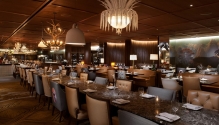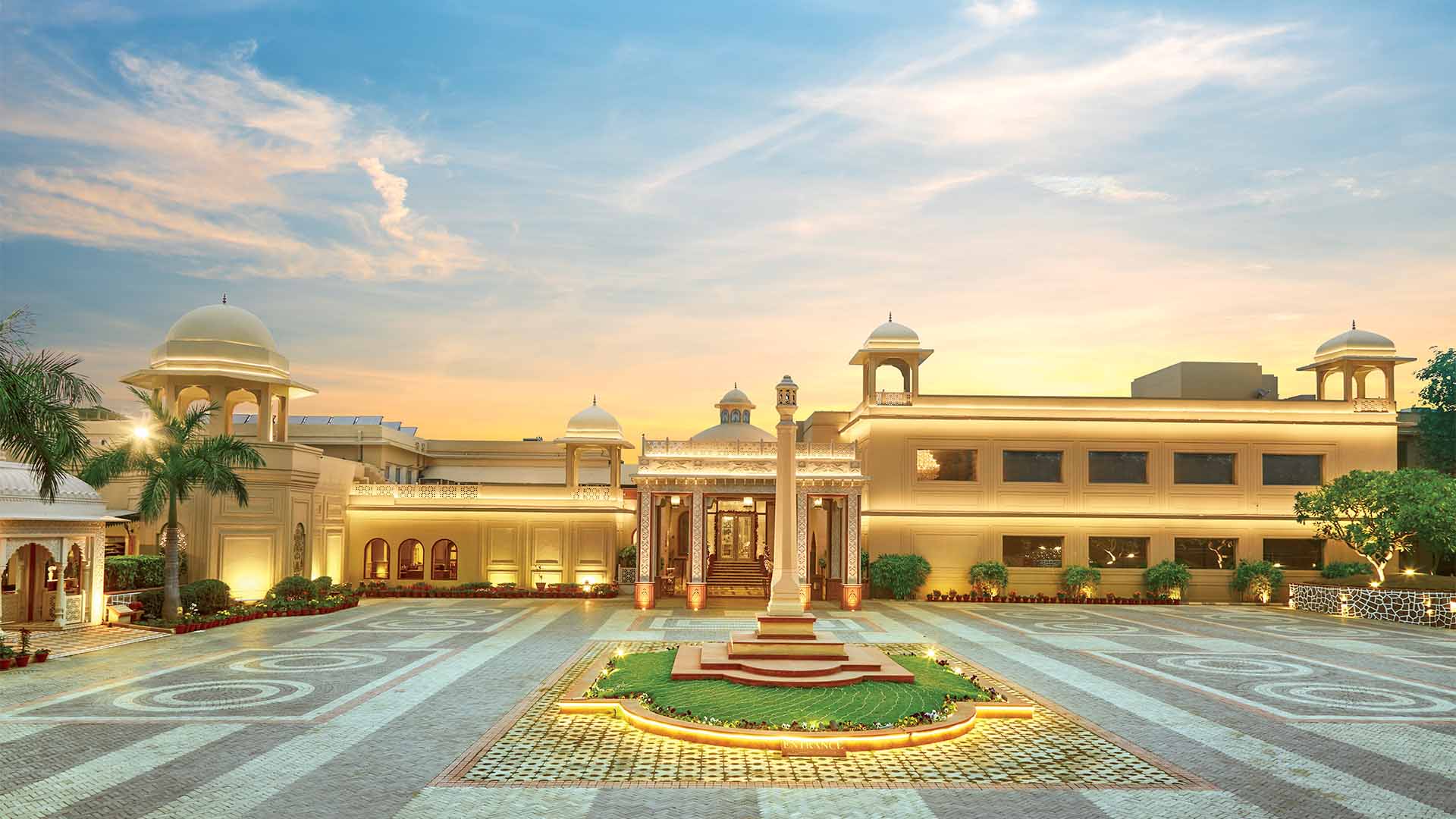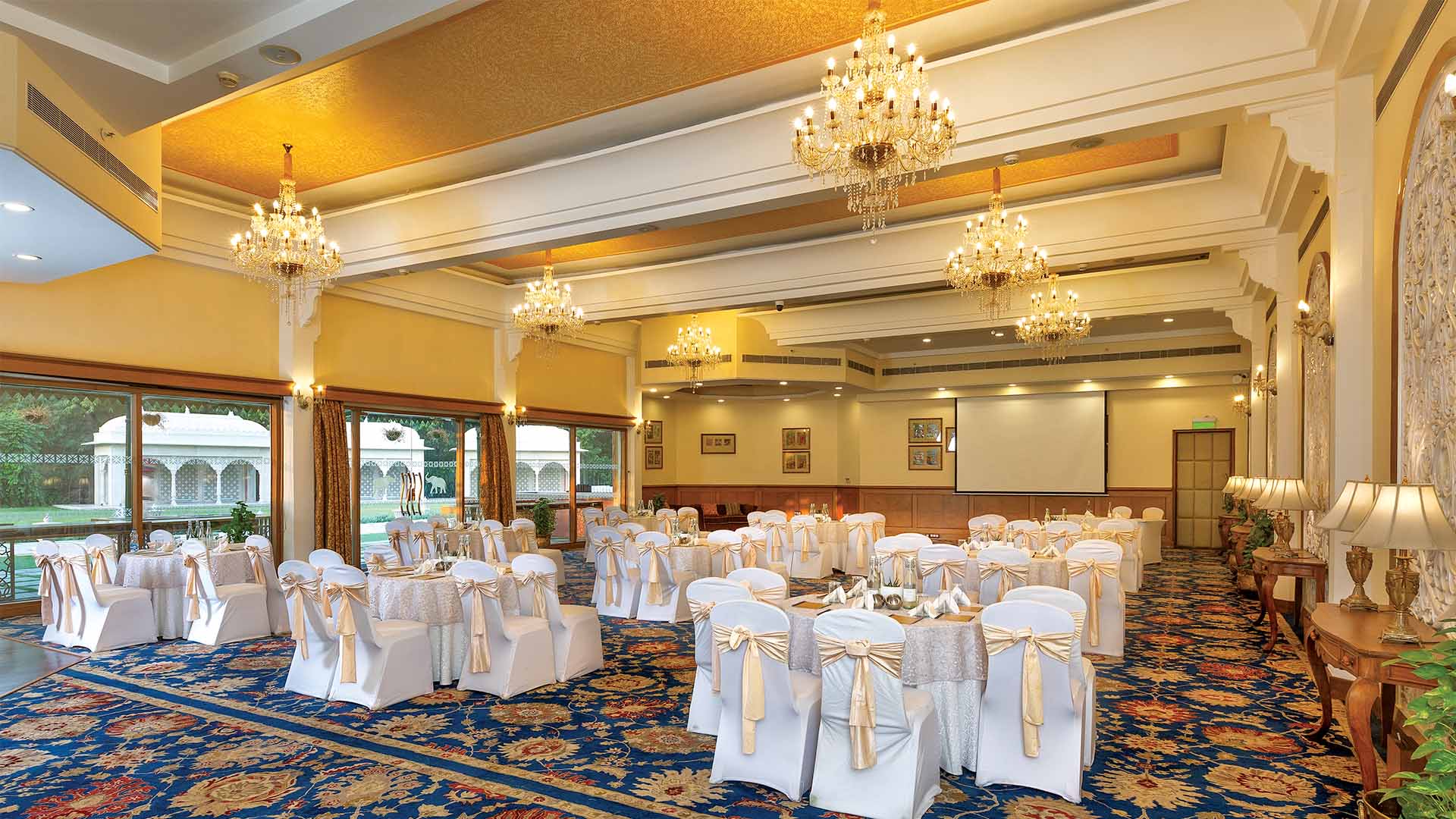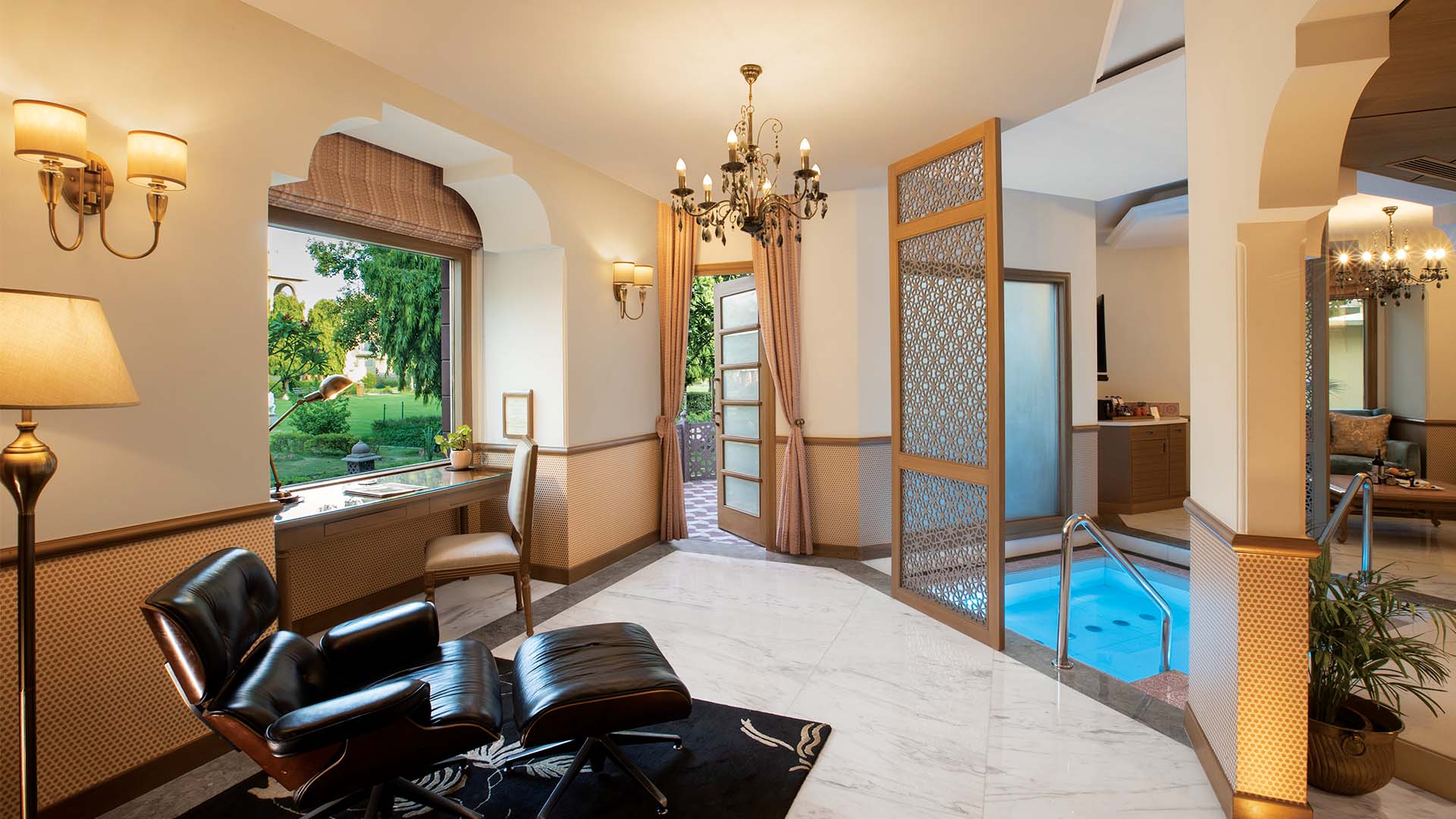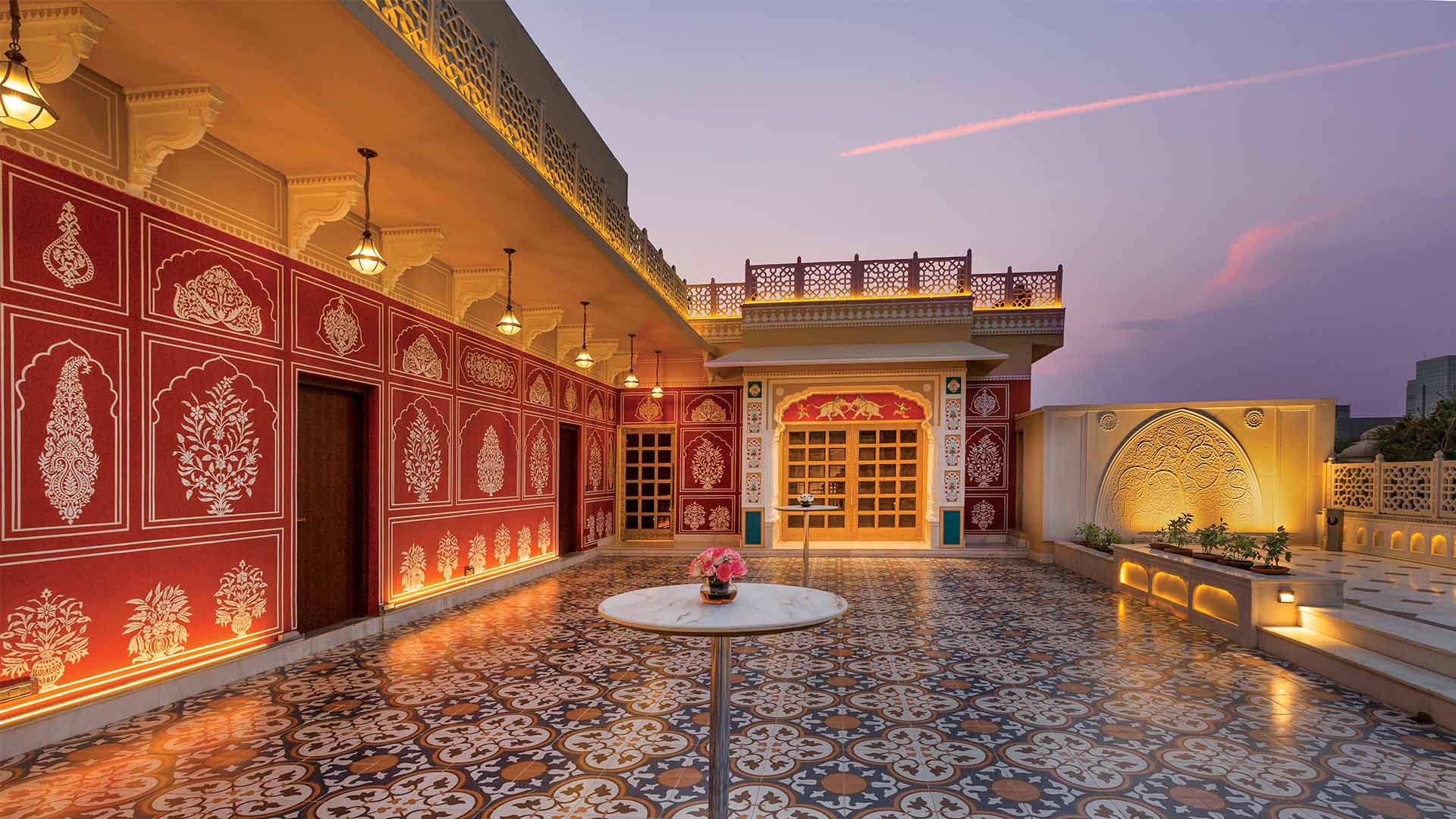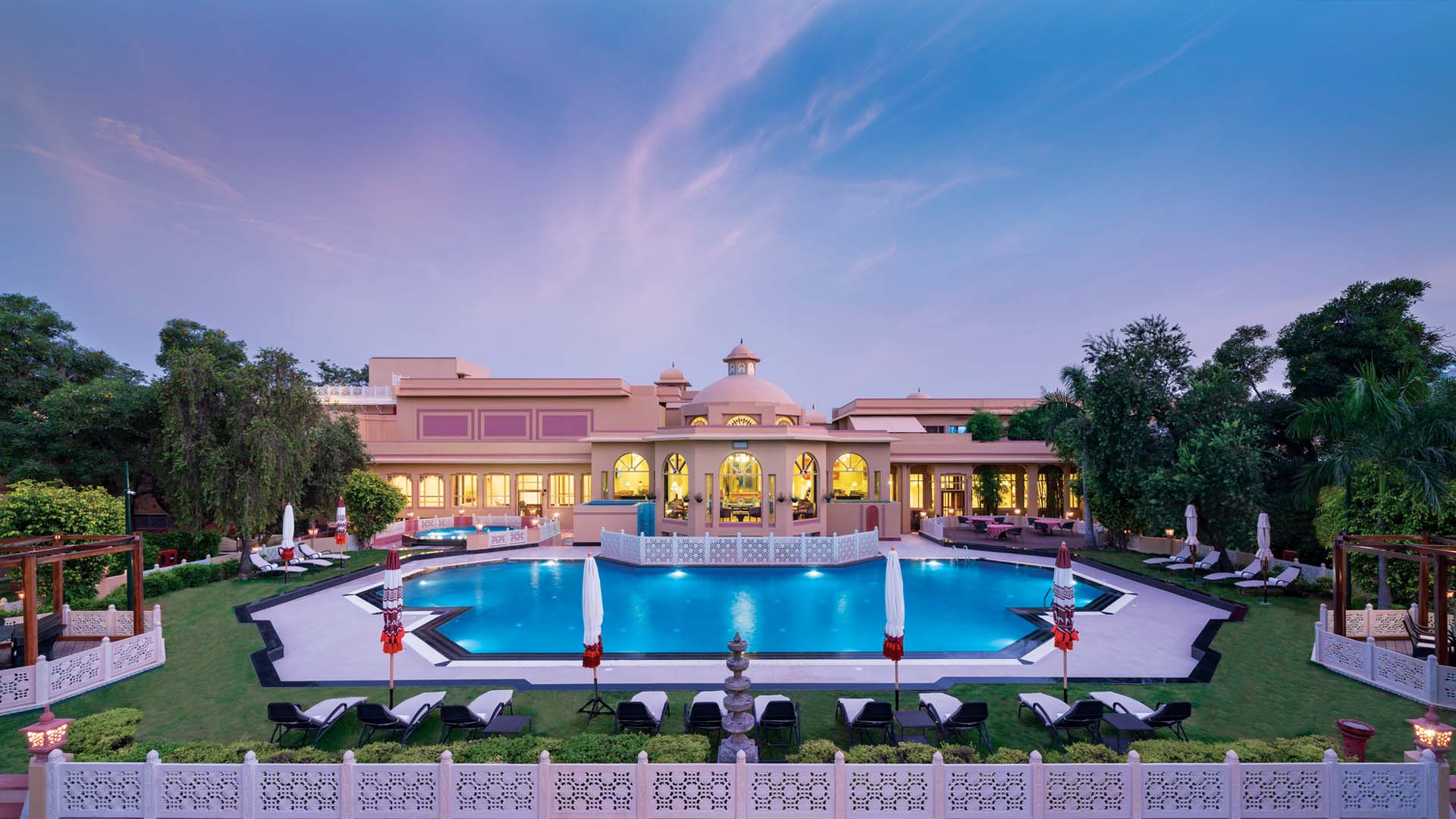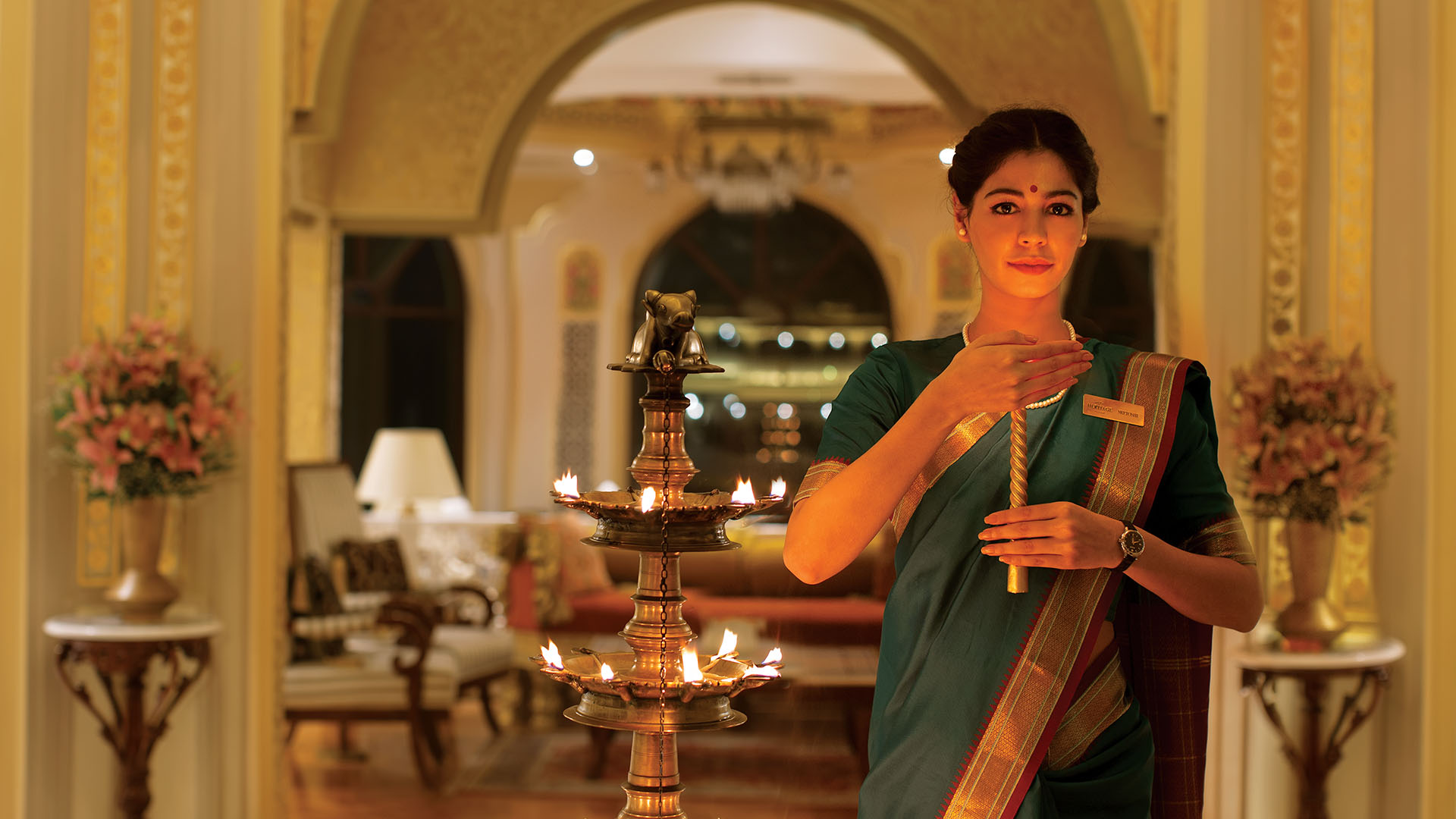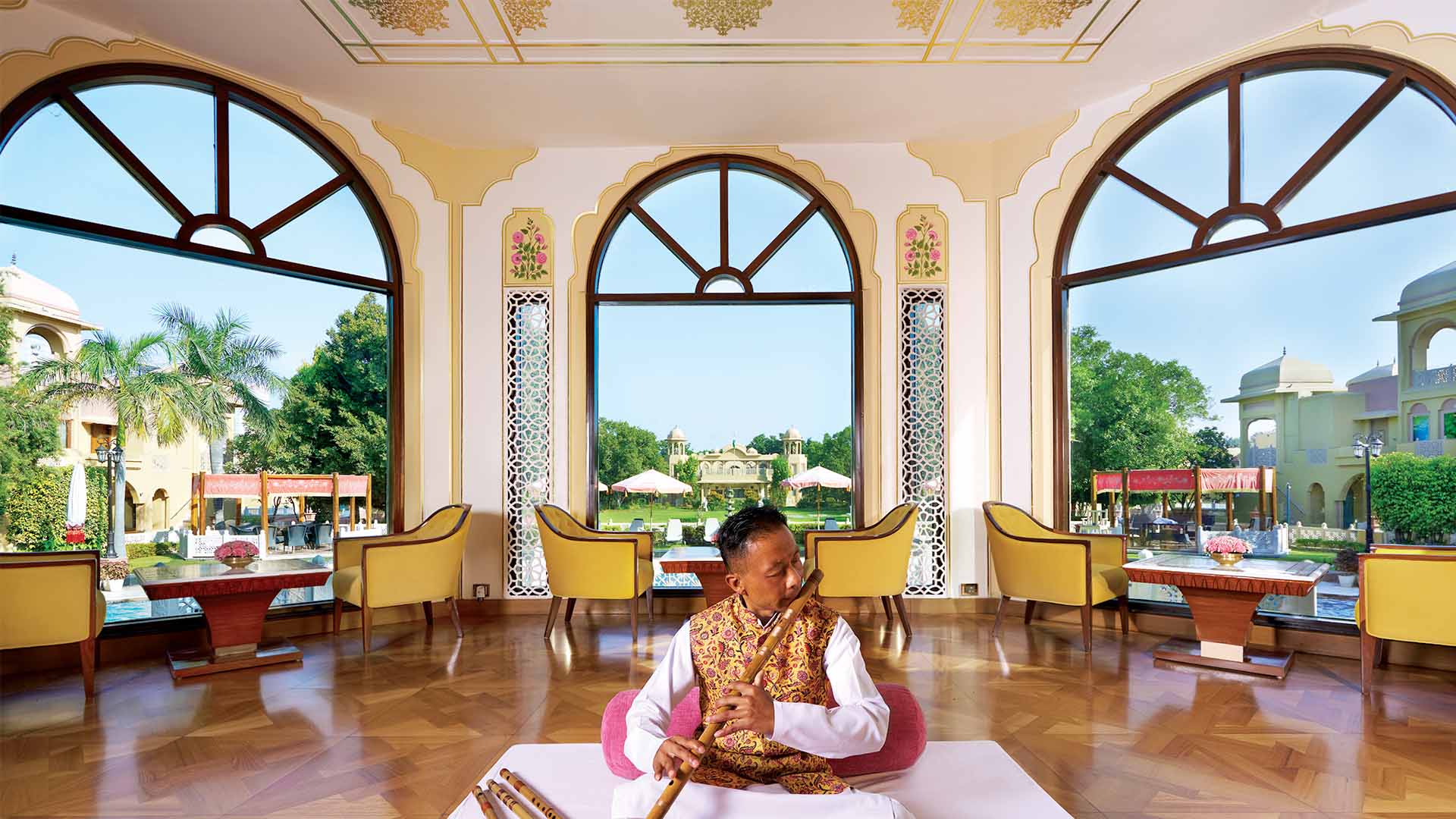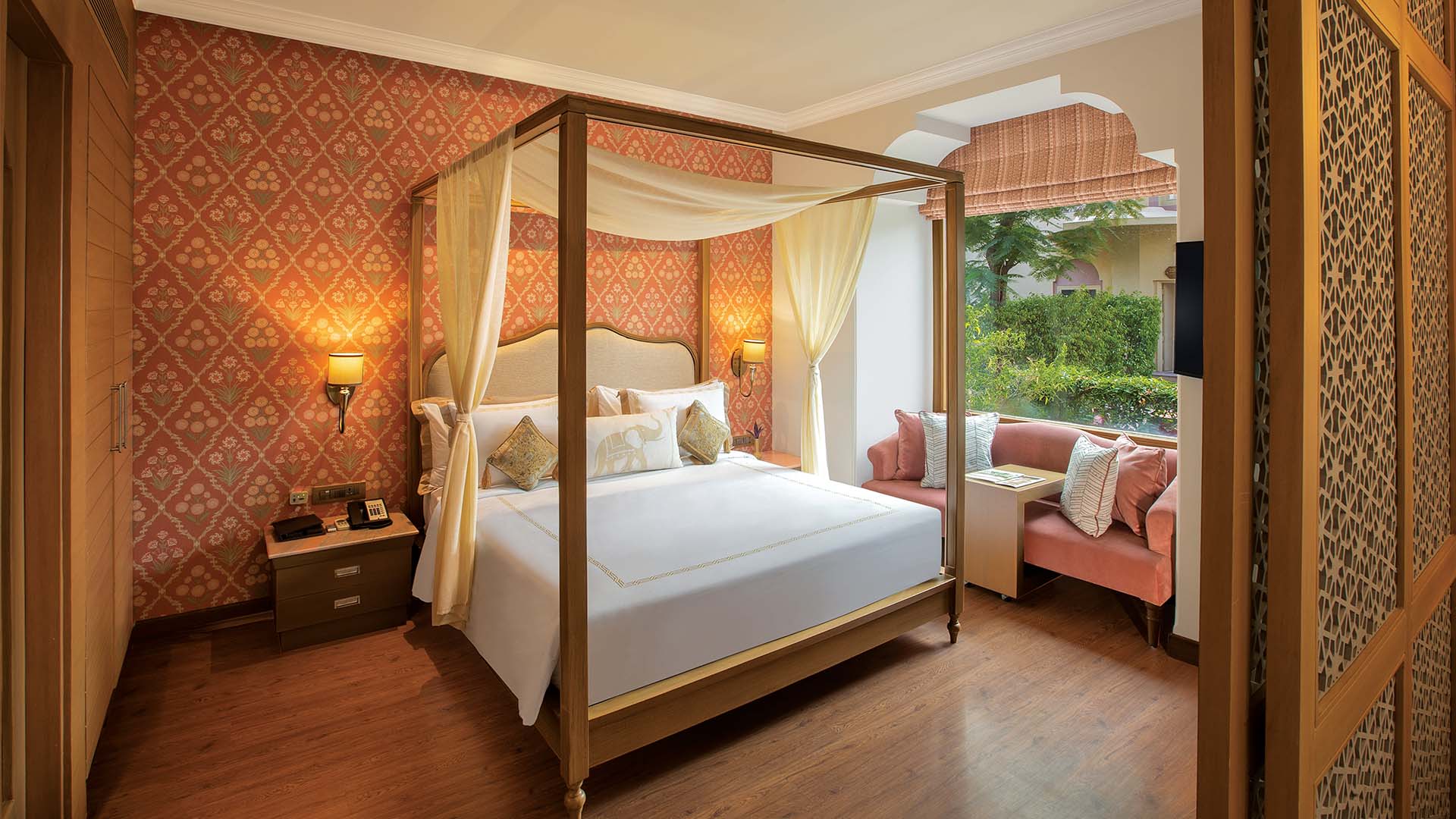Putting Manesar on the Map
Heritage Village Manesar was a game changer in India’s hospitality landscape, launched when urban getaways were a distant dream and all-inclusive resorts for inbound travellers were rare. Three decades later, its charm endures, enhanced by extensive restoration.
By Suman Tarafdar
Just three decades ago, Delhi was a different place—physically, economically, socially, and shall we say, mentally. While the city had ‘five-star’ hotels, they were almost exclusively for the inbound—read foreign—guests. Leisure travel for the vast majority of Indians meant visiting maasi’s house or going on pilgrimages. In this post-liberalisation phase full of new possibilities, urban getaways were still a mirage for Delhi. Then, almost magically, here was a resort that was close enough to the city, yet sufficiently distant to be a true ‘getaway’.
Heritage Village Manesar was a game changer for India’s Golden Triangle, the most coveted tourism circuit in India, which, with the addition of the resort, squared. A gorgeous renovation later, the resort remains a favourite getaway within a sprawling megalopolis.
The resort was initially an ‘all-inclusive’ hotel, largely catering to inbound tourists, points out Arjun Sharma, Chairman, Select Group. His desire to bring the experience of Rajasthan closer to Delhi meant the 12-acre property had four blocks of haveli-style accommodation, which proved to be a spectacular hit.
“The Heritage Village Resort at Manesar brings together the formal style of classical Lutyens’ British architecture with the rich traditions of Indian heritage design, particularly from Rajasthan and the Mughal era," elaborates Shekhar Sawant, Managing Director & COO, Heritage Village Resort & Spa.
Today, Manesar is a thriving commercial hub, but Heritage Village in its initial period sat in splendid isolation—a veritable oasis on the Delhi-Jaipur highway. Renovated during the COVID era, with room count expanding to 150, its grandeur elicits an instant response from first-time visitors. Entering via a majestic pair of imposing gates reveals the pastel sandstone hues of the façade, interspersed beautifully with balconies, lattice screens, and deep cornices, elements drawn from the language of Rajasthani architecture. The porch stuns in marble of contrasting tones.
The central block is the beating heart of the resort. A majestic marble-clad lobby, softened with marble lotus motifs and floral decorations brushed by hand, with an occasional glint of gold, complements the luxuriously appointed sofas, all topped by an ornately gilded dome. Gold filigree patterns adorn the striking lattice frames, establishing the Rajasthani connection even more intricately. Art is an intrinsic part of the hotel with marvellous paintings evoking the grandeur of past eras.
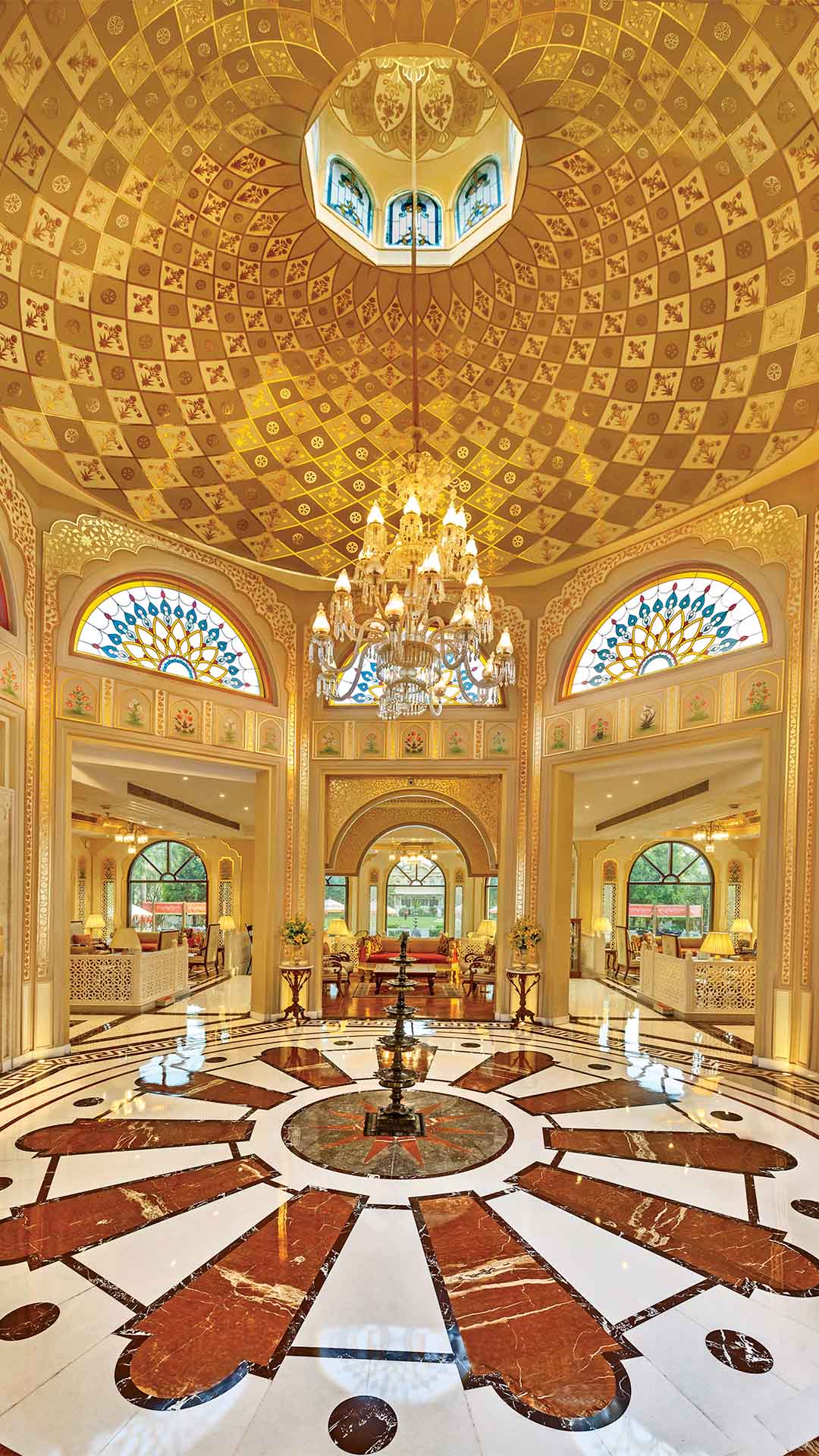
Heritage Village Manesar's Rajasthani haveli-style façade with jharokhas and screens leads to an imposing marble-swathed lobby.
The hotel has upgraded its dining options, too. Suvarna Mahal is an all-day diner; Mama Miso offers a Pan Asian menu, and Patisserie serves such a delectable spread that the restaurants are often full of walk-in guests who want to dine here. Especially of note is the subterranean Red Lounge, whose interiors are designed to transport you to the heart of Americana.
The resort is exceptionally well-suited for events, including weddings. From sprawling lawns to private terraces, technologically equipped boardrooms and conference halls, there are a plethora of venues to choose from.
Sawant points out that the resort has multiple USPs—right from the convenient location just 40 minutes from Gurgaon on the highway, to the way the rooms are grouped into clusters of rooms, rather like a haveli, which offers guests a lot of private space. “The surrounding landscape is very verdant, and we like to maintain our public grounds, for which there is a dedicated team of horticulturists. We realise our guests come primarily for relaxation, so we create that environment for them.”
Indeed, you would be forgiven for thinking that your good karma has transported you from the hubbub of the surrounding areas to an oasis. It is easy to fall in love with Heritage Village at first glance. The repeat visits are what turn you into a devotee.
For Delhi folks of a certain vintage, the white and blue SITA World Travel buses were an everyday sight. They were part of north India’s most iconic travel agency, helmed by the legendary Inder Sharma, till it was acquired by Kuoni. A shift in direction by the group saw it veer towards hotels and malls, primarily led by son Arjun Sharma.
The 1990s saw the opening of the first hotels of the newly branded Select Group, followed by Select Citywalk, widely acknowledged as the city’s most successful mall. A partnership with Nexus saw the Nexus Select Trust transforming into India's first publicly listed retail (REIT) with a portfolio of 17 malls across the country. And set to rise rapidly. Meanwhile, the indefatigable leader has also entered the organic farming space with Vardan Agrotech and is exploring the healthcare sector. He shares how the journey into hospitality proved transformative, not just for the group, but for the entire city.
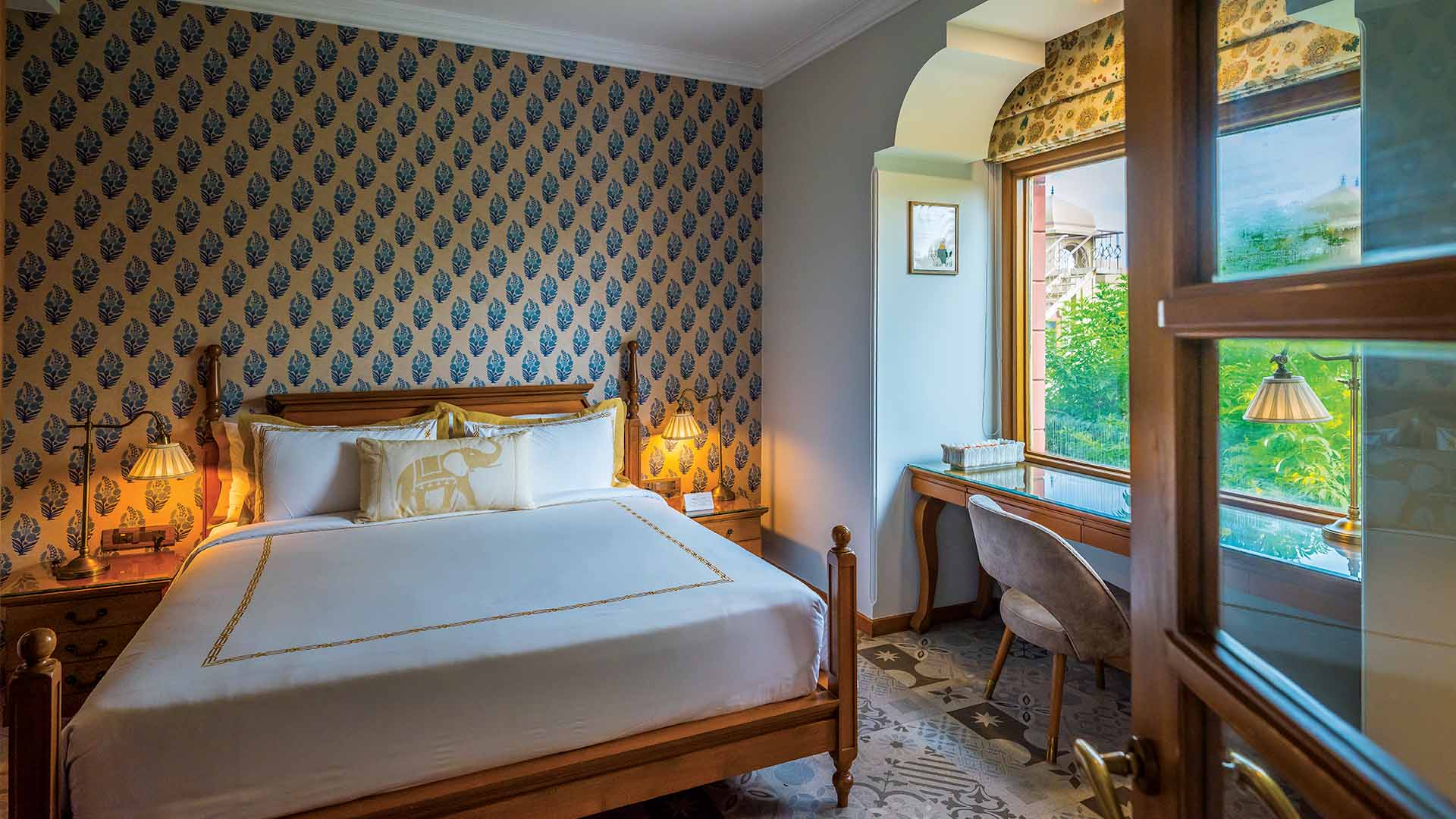
Marble lattice work and gold leafing mark the architectural features of the expansive Aangan Suite.
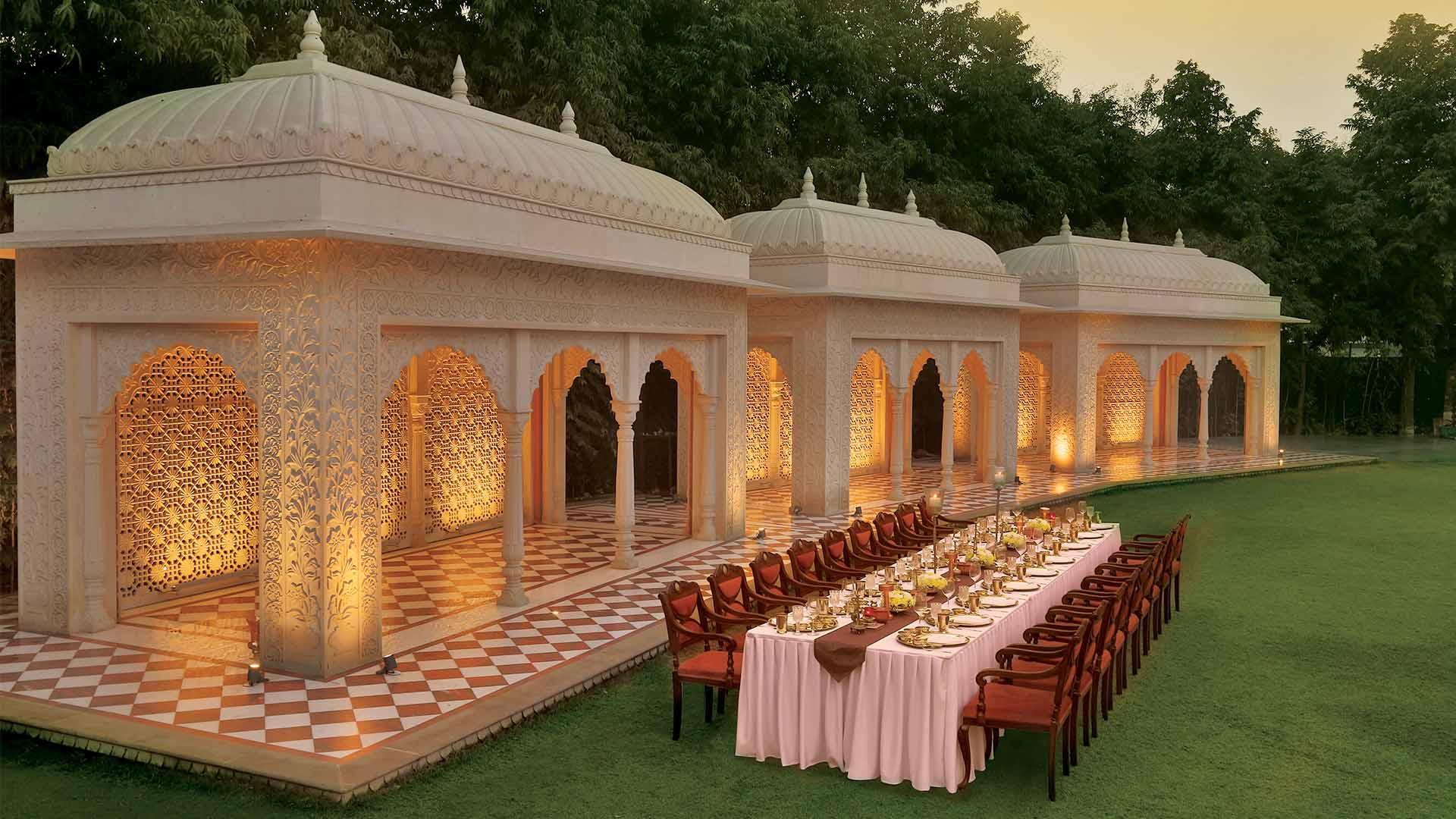
Baradari, the outdoor pavilion, is used for weddings and conferences, particularly to host exclusive dining experiences.
Q & A With Arjun Sharma-Chairman, Select Group
He takes us through the family's foray into hospitality and the lessons learnt along this journey.
How did the journey of Heritage Village Manesar begin?
My father used to own a travel business called Sita World Travel. I joined as a young management trainee in 1984. Sita was a quintessential travel company, offering inbound tourism, outbound and domestic travel, cargo, and related services. But inbound tourism was its bread and butter. While we were among the top inbound businesses in the country, we didn’t have our own hard product. We were dependent on other service providers such as the Taj, Oberoi, Clarks, and so on for the 'Golden Triangle'—Delhi, Agra, and Jaipur. In the mid-80s, it was mainly Indian homegrown chains for whom inbound business was a crucial part of their model.
We felt that we should try to build an asset somewhere on the triangle, without offending the existing hoteliers. We found this little village called Manesar on the Jaipur-Delhi highway. It is still roughly 30 to 35 minutes from the Indira Gandhi Airport. We felt, at least in those days, that a lot of our clients would go to Delhi, Agra, Jaipur, and then come back to Delhi and stay the night. I did a lot of research at that time to see whether there was a possibility of getting that business without affecting anybody else in the incoming chain. My father gave me a budget of ₹25 lakh, and I bought 12 acres of land.
What were Manesar's prospects at the time?
Manesar was just empty land. There were no factories. Subsequently, the Haryana government decided to make an industrial township there. The Japanese were aiming to set up a Japanese township, and they felt that having a good hotel nearby would at least give them a decent place to stay. That’s why they chose this location over Sonipat or Panipat back then—there simply wasn’t a five-star hotel in the area.
How was the initial response to the resort?
It was our first foray into the hospitality industry. We had a very strong partner in Thomson Holidays, which later on became TUI. They were very keen to have an all-inclusive resort. They actually asked me to look at a hotel in Goa for them, and that is how our second resort came up in 1999.
The all-inclusive concept, quite popular globally, hasn’t caught on in India. How was the reaction when you set it up?
We ran this concept for many, many years. In fact, even now, for the charter customers, we still have an all-inclusive package. We have a different package for domestic customers, but it’s a little more complicated to run when you run multiple packages. Because we have done it for 25 years, our teams are well-equipped to deal with it. In winter, 60 to 70% of our occupancy comes from charter traffic. It's not easy to replicate the concept, because charter customers want entertainment in the evenings. It's not just about free food and drinks. They still want to be catered to. It's like a cruise—you can't just give a standard buffet. They want variety, they want changes, they want style—that's really where the market has evolved to. So, it's a little more expensive to offer all-inclusive packages now.

Arjun Sharma-Chairman, Select Group.
We felt that we should try to build an asset somewhere on the Golden Triangle, without offending the existing hoteliers. We found this little village called Manesar on the Jaipur-Delhi highway.
Arjun Sharma
Chairman, Select Group

How did the resorts evolve? Did you face any particular challenges?
By the time we tied up the land and the permissions to build, we also made our share of mistakes. For instance, when the hotel opened, the architect decided to go the eco-friendly way, using elements such as matkas, sand, and traditional methods instead of proper thermal insulation and waterproofing. But it didn’t hold up. As soon as the first rain came, water started pouring in everywhere, and we had to shut the hotel down for six weeks. On top of that, Haryana had prohibition, so no alcohol could be served at the resort! We had to deal with that for a year and a half.
We started with roughly 80-odd keys. Manesar slowly evolved. We added more rooms. We realised that we didn't want to be dependent only on foreign tourists. It has become a 150-key hotel. It caters to a wide variety of customers—conferences, MICE, weekend travellers, honeymoon travellers, and the wedding segment. It's so close to Delhi that you are out of the city, and yet, if you want to invite guests just to enjoy a dinner without offering them accommodation, you can do that. It offers you that flexibility. Now, of course, other resorts have come up. But we were the trend setters.
How were the resorts impacted during COVID?
My father used to always say to fix the sails when the winds are up, not when the winds are smooth. So, we used the opportunity during the shutdown to start planning. Of course, we couldn't do it in one go. But both hotels took shutdowns. Manesar took a shutdown two years ago through the summer, and Goa took it last year. Obviously, both Manesar and Goa have had challenges. Goa has a huge monsoon period in the off-season, which makes it very difficult to construct. In Manesar, because of the GRAP restrictions (Gradated Response Action Plan for Delhi-NCR) in the winters, you can't work due to atmospheric pollution. So, the renovation couldn't take place in one go. But I would say we finished about 95% of the renovation over the last three years.
How were the hotels repositioned post the renovations?
The hotels have shown significant and robust growth. We opened two stunning restaurants at our Goa property—one focused on Italian cuisine, the other on Pan Asian. A key metric for us is guest satisfaction scores on Booking.com and TripAdvisor, where we are probably in the top 5% of hotels. In fact, our all-inclusive resort in Goa was even named one of the top 10 all-inclusive resorts in Asia a couple of years ago. And that was before the renovation was even finished.
India, of course, has changed a lot over the last 30 years. What have been some of the biggest changes to impact your hotels?
India has changed tremendously. Today, technology is one of the biggest enablers, allowing many independent hotels to reach customers directly. The cost of doing so is still high, though. If you are a brand, it’s cheaper. In emerging tourism pockets, there are a whole lot of independent hotels. Naturally, the big brands are now acquiring these independents because they realise they can’t compete at that level—there’s a segment of customers who just want smaller, boutique, family-run businesses, not a cookie-cutter style.

















